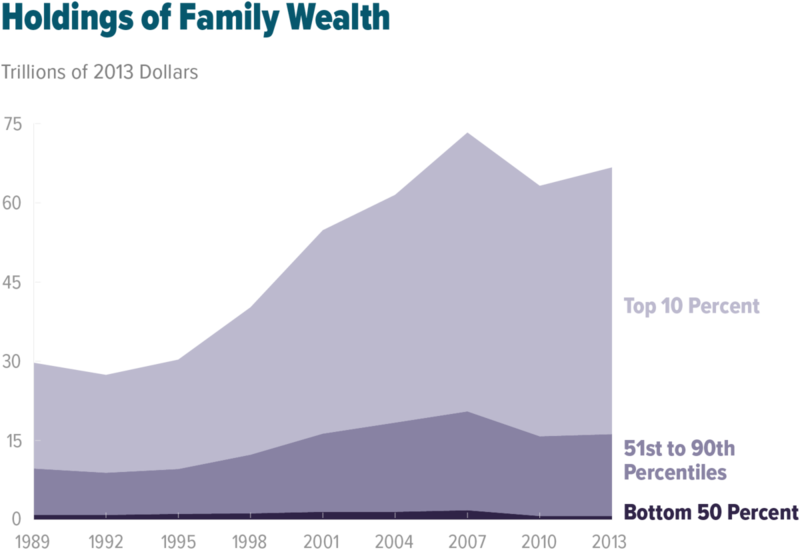
People with graduate degrees are now a significant share of the electorate.

The increasing economic importance of education
Education, inequality, and the college sorting machine
Some colleges (yes, including CMC) have more students from the top one percent than the bottom 60 percent.
Jonathan Wai writes at Quartz:

The increasing economic importance of education
Education, inequality, and the college sorting machine
Some colleges (yes, including CMC) have more students from the top one percent than the bottom 60 percent.
Jonathan Wai writes at Quartz:
The following data in the graph below are taken from another research paper which can be found here (pdf). I looked at the educational backgrounds of US Fortune 500 CEOs, federal judges, senators, House members, attendees at the World Economic Forum in Davos (which included CEOs, journalists, academics, and people in government and policy), and the most powerful men and women according to Forbes. The blue bars indicate the elite school percentage (undergraduate or graduate school). The red bars indicate the graduate school percentage not included in the elite category. The green bars indicate those who graduated from college independent of the other two categories. And the NR/NC category indicates people who did not report or had no college.

One might argue that the Fortune 500 CEO elite school percentage of roughly 38% is not very high. But this value should be taken in the broader context. Note the purple bars, which show that nearly everyone in the US elite graduated from college. This flatly contradicts the stories glamorizing college dropouts—such as Bill Gates and Mark Zuckerberg—who both were accepted by and attended Harvard. Next, it’s interesting to note that 44.8% of billionaires, 55.9% of powerful women, 63.7% of Davos attendees, and 85.2% of powerful men attended elite schools. Finally, 55.6% of the journalists who attended Davos went to elite schools. I conducted my own analysis of the data on The New Republic masthead, suggesting that roughly 64.2% attended elite schools. Data on the New York Times was not systematically available, but it is unlikely to be much different, and may even be more select given its reputation.
- The 2014 Religious Landscape Study finds that unmarried people are far more likely than those who are married to be unaffiliated. It also shows, however, that both groups – those who are married and those who are not – have grown less religiously affiliated in recent years, though married people have done so more slowly. Among married adults, 18% now describe themselves as religious “nones,” up four points since 2007. More than a quarter of unmarried adults (28%) have no religious affiliation, up nine points in recent years. Within the broader category of unmarried U.S. adults, the growth of the religiously unaffiliated is especially evident among those who are living with a partner (26% were unaffiliated in 2007, compared with 35% today) and those who say they have never been married (24% vs. 34%). Both of these groups consist mostly of young people. Those who are divorced or separated and those who are widowed, two groups that consist mainly of older adults, have seen more modest increases in their shares of religious “nones.”
- Religion and Happiness
- Affiliations
- The Salvation Army is a Religious Denomination
- Religion and Charity
- Religion and Community Service
- Attitudes Toward Religious Groups
- Getting religion from politics, not politics from religion
Tocqueville (p. 458) on the 19th century:
In times of freedom and enlightened democracy there is nothing to separate men from one another or to keep them in their place. They rise or fall extraordinarily quickly. They are so close to each other that men of different classes are continually meeting. Every day they mix and exchange ideas, imitating and emulating one another. So the people get many ideas, conceptions, and desires which they never would have had if distinctions of rank had been fixed and society static.
Douglas Rae on early 20th century New Haven, rebutting the idea of strict residential separation:
New Haven in the Frank Rice era around 1910 was nothing of the sort. People at the bottom and the top of the workforce usually lived in town, close to their places of work, and therefore fairly close to one another. (p. 115)The world of Fred Trump.
...
Allowing for the vagaries of historical data, we can conclude with certainty that a majority of civic organizations were headed by regular folks for whom high office was not a routine expectation in life. (p. 166)
Belmont and Fishtown come apart.


No comments:
Post a Comment